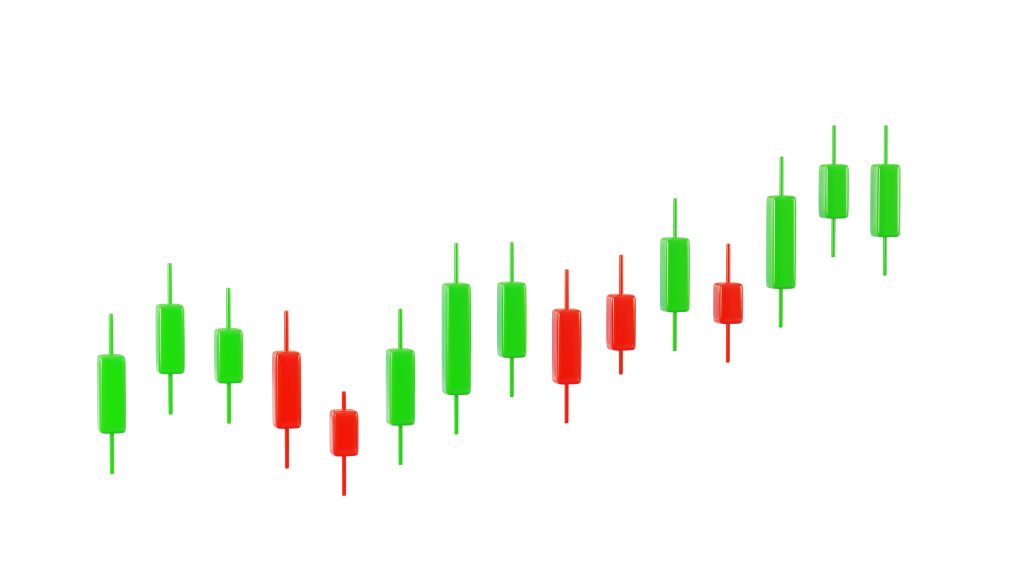
Gold trading involves buying and selling gold as a financial asset, with the goal of profiting from changes in its market price. Traders speculate on gold price fluctuations, leveraging short-term volatility or long-term trends.
Key Concepts:
🔹 Example:
A trader buys gold at $1,800 per ounce and sells at $1,850 per ounce. Profit = ($1,850 – $1,800) x quantity of gold traded.
Understanding what drives gold prices can enhance trading decisions:
Economic Data:
Currency Strength:
Geopolitical Events:
Market Sentiment:
🔹 Example:
During inflationary periods, gold prices typically rise as investors seek protection for their wealth.
Different ways to trade gold:
Different trading approaches to suit your style:
Day Traders:
Swing Traders:
Long-term Investors:
Essential tools for successful gold trading:
📊 Common Chart Types:


🔍 Key Indicators:
🔹 Example:
If RSI indicates overbought conditions (above 70), it may signal a potential price decline, offering a selling opportunity.
Trend Following:
Breakout Trading:
Safe-Haven Strategy:
🔹 Example:
If gold breaks above a strong resistance level of $1,900, traders might buy, anticipating continued upward movement.
Effectively managing risk is crucial:
Essentials:
🔹 Example:
With $5,000 in your account, risking 1% means only risking $50 per trade. Target at least $100 profit for a favorable 2:1 ratio.
Step-by-step guidance to get started:
🔹 Example:
You analyze and decide gold prices will rise. You buy gold CFDs at $1,850, set your stop-loss at $1,830, and take-profit at $1,890.
You now understand:
Continue learning, remain disciplined, and refine your skills to become a successful gold trader.
Sky Links Capital offers expert guidance, reliable platforms, and excellent resources to enhance your gold trading journey.
Take the next step—visit Sky Links Capital today and start your successful gold trading journey with confidence!
Disclaimer: The information and tools provided by Sky Links Capital are strictly for educational and informational purposes only. They do not constitute financial advice, investment recommendations, or an offer to buy or sell any financial instruments. Users should make independent decisions based on their own research and, where appropriate, seek professional advice.
Risk Warning: Trading in any Financial Instrument is complex and carries a high risk of losing money rapidly due to leverage. It may not be suitable for all investors. Before engaging in any trading activities, you should carefully assess your investment objectives, risk tolerance, and financial situation. If necessary, seek independent financial advice before proceeding with trading.
Sky Links Holding Ltd is a prescribed holding company incorporated in the Dubai International Financial Centre (DIFC), established solely to hold equity interests in financial services subsidiaries. It does not engage in regulated activities or operational control; subsidiaries operate independently under their own regulatory frameworks. The holding company supports capital stability, strategic alignment, and shareholder value across the group.
Sky Links Capital L.L.C. has its registered office located at Offices 208, BB03, Bay Square, Business Bay, Dubai, United Arab Emirates, and is registered with the Dubai Economic Department under License Number 1385407.
Sky Links Capital L.L.C. is a company licensed and regulated by the Securities and Commodities Authority under Category 5, with license number 20200000235. The SCA regulated company, acting as an Introductory firm, in partnership with Sky Links Capital Limited and other renowned regulated entities, is authorized to facilitate services for UAE residents and nationals. Sky Links Capital L.L.C. operates strictly as an Introductory entity and is not authorized to provide investment advice, manage, or hold clients’ assets or money. All services rendered by Sky Links Capital L.L.C. are provided solely on an Introductory basis.
Sky Links Capital Limited is a Limited Company with Investment Dealer (Full Service Dealer excluding Underwriting) under License No. GB24202837 and is authorized and regulated by the Financial Services Commission (FSC) in Mauritius.
Sky Links Capital L.L.C. is a Limited Liability Corporation registered in St Vincent & The Grenadines with registration no. 3698LLC2024.
Sky Links Capital Limited may publish general market commentary from time to time. Sky Links Capital Limited and Sky Links Capital L.L.C. accept no responsibility for any use of the content presented and any consequences of that use. No representation or warranty is given as to the completeness of this information. Anyone acting on the information provided does so at their own risk. The information contained herein is not intended for distribution to residents in any country where such distribution or use would contravene any local law or regulatory requirement. Our products and services are not available to embargoed or sanctioned countries. The information is not intended for distribution to, or use by, any person in any country or jurisdiction where such distribution or use would be contrary to local law or regulation.
Office#208, BB03, Bay Square, Business Bay, Dubai, UAE
+97144957000
Premier Business Center, 10th Floor, Sterling Tower, 14 Poudrière St, Port Louis, Mauritius
+230 5 8282426
Suite 430, Beachmont Business Center, Kingstown, Saint Vincent and the Grenadines.
+784 5324533
2025 Copyright © Sky Links Capital Limited.